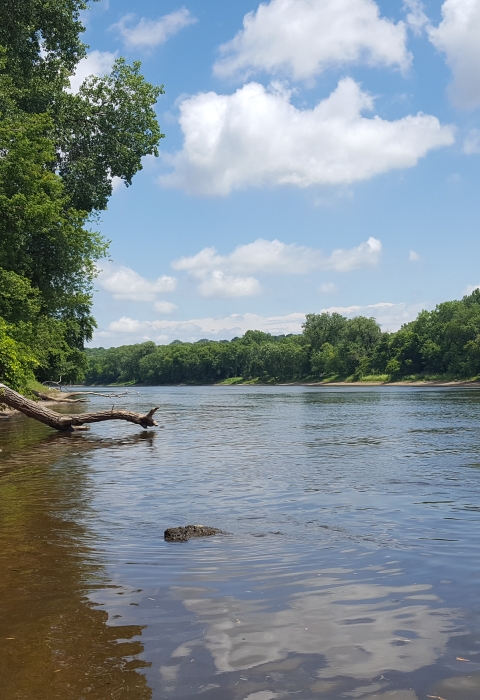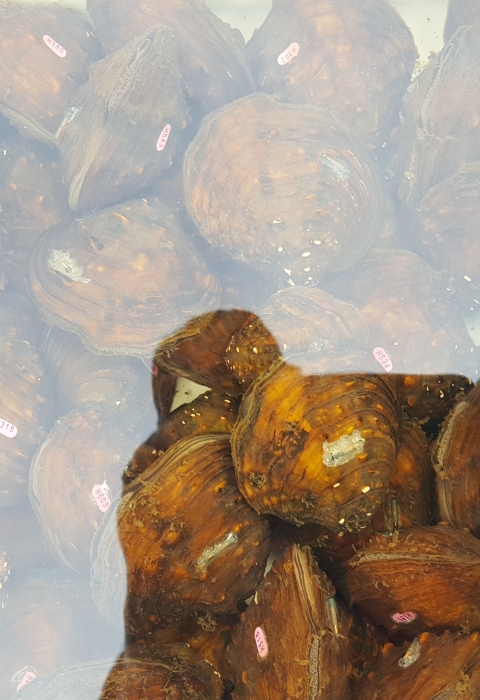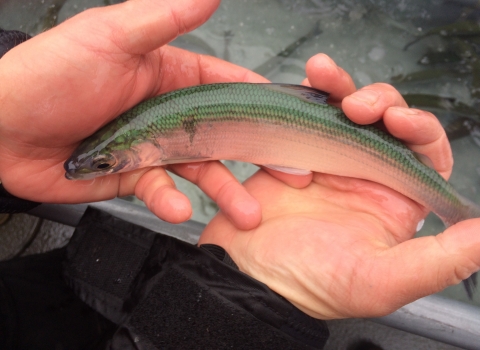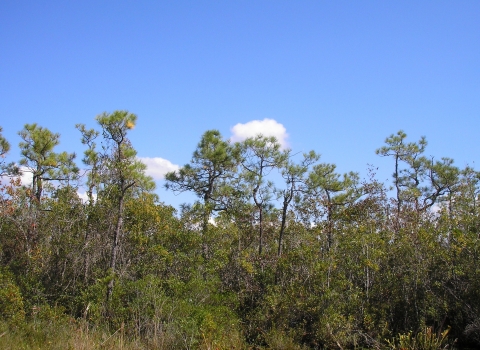Projects and Research
The St. Louis River flows through northeastern Minnesota, with the lower portion forming the State boundary with Wisconsin before discharging to Lake Superior between the Twin Ports of Duluth, Minnesota and Superior, Wisconsin. This lower part of the St. Louis River is often referred to as the St. Louis River estuary, and has been influenced by a century of industrial activity. Through...
The cisco (Coregonus artedi) and the bloater (Coregonus hoyi) both played critical roles in the trophic dynamics of the Great Lakes. They were the primary native prey species for top predator fish such as the lake trout. By the 1950’s, however, overfishing and competition with non-native, plankton-eating prey fish (alewife) caused the collapse of these native prey species, and subsequently...
The Lower Fox River, located in northeastern Wisconsin, begins at the Menasha and Neenah channels leading from Lake Winnebago and flows northeast for 39 miles where it discharges into Green Bay and Lake Michigan. Paper companies using polychlorinated biphenyls (PCBs) to make carbonless copy paper discharged nearly 700,000 pounds of these chemicals into the Fox River, between about 1954 and...
The Sheboygan River and Harbor site is located on the western shore of Lake Michigan, approximately 55 miles north of Milwaukee, Wisconsin. It includes the lower 14 miles of the Sheboygan River from Sheboygan Falls to the Sheboygan Harbor.
Industrial activities along the Sheboygan River released polychlorinated biphenyls (PCBs), heavy metals, and oil residues within the...
The Arrowhead Refinery is a former oil recycling facility located within the St. Louis River watershed in Hermantown, St. Louis County, Minnesota. The facility was in operation from 1961-1977 and was situated on a palustrine forested, scrub-shrub wetland, surrounded by commercial, residential, and public use. Facility operations generated approximately 7,000 cubic yards of highly...
The St. Louis River U.S. Steel Superfund Site, located in Duluth, Minnesota, is a former steelmaking and wire mill facility that began operations in the early 1900s. Historic operations released hazardous substances, including polycyclic aromatic hydrocarbons (PAHs) and heavy metals, into the environment. The Site was placed on the National Priories List in 1983 and includes 19...








